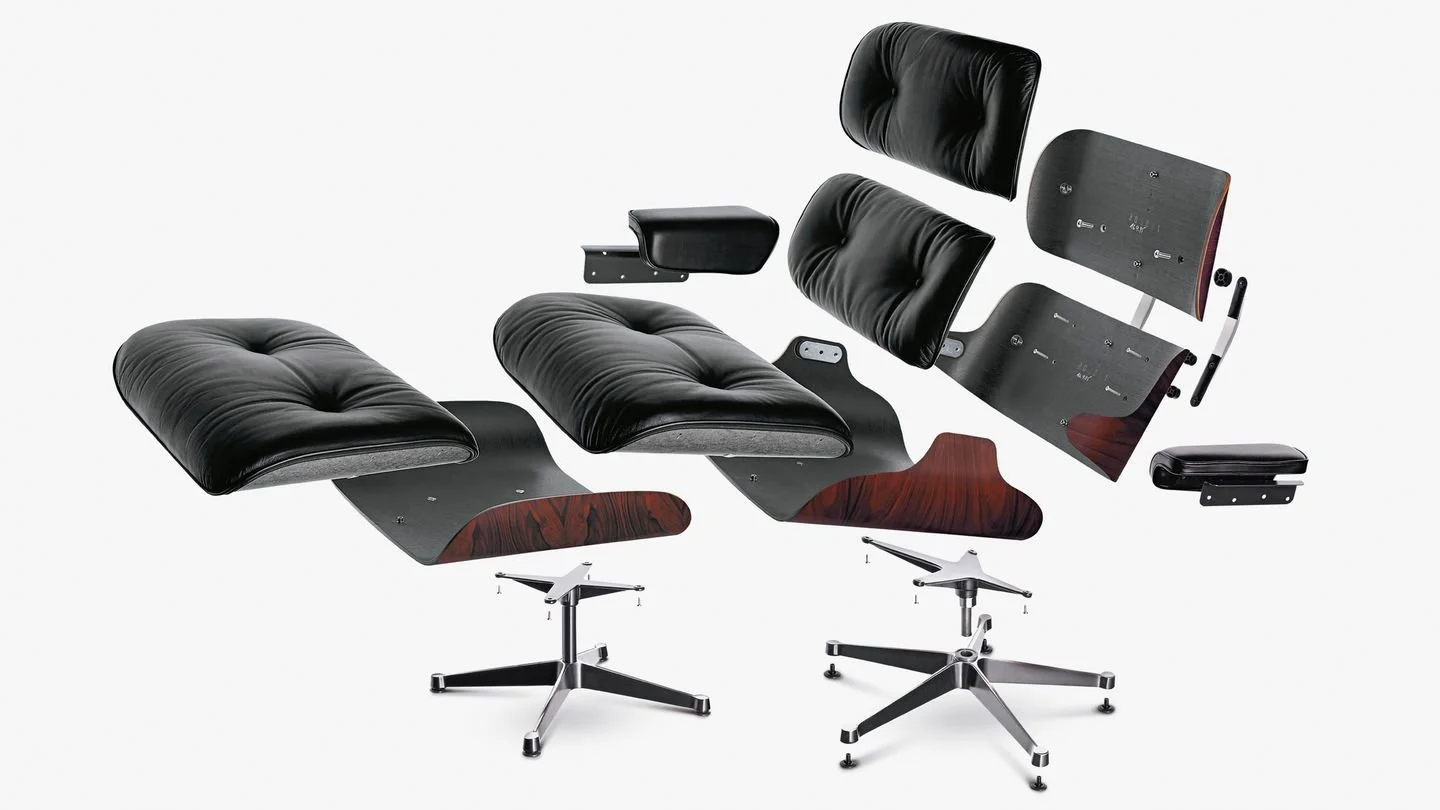Replica Furniture: Making Design Accessible or a Legal Form of Theft?
Words by Rhiana Dabboussy
What is replica furniture really costing us?
The smell of permanent marker, the sound of packing tape peeling from its roll, the sensation of finally securing that last cardboard box. It’s moving day. I have found my perfect rental – courtyard, indoor toilet (nothing is guaranteed in the rental game) and my very own home office. There is one thing left that the place needs: an office chair.
I open my browser and am flooded with options. But, there is one name that precedes the pages of product titles: ‘Eames’. ‘Eames Premium Replica Management Chair’, ‘Eames Replica Side Chair’, ‘Deluxe Eames Replica Office Chair’ – the search results are infiltrated with knock-offs heralding the household name, ranging in price and, presumably, quality.
Though few have been replicated more than Charles and Ray Eames, imitation is not reserved for world-renowned designers. Emerging artists’, independent creators’ and small-scale manufacturers’ designs are routinely reproduced. So, what does this mean for those designers who may not be world famous? Is replication permissible?
Two legislative frameworks offer design protection in Australia: the Designs Act 2003 and the Copyright Act 1968. It’s the way that these statutes intersect that leaves the door wide open for design theft.
Unlike copyright which arises automatically, the Designs Act doesn’t offer protection until a creator registers their design under it. Though this process can be rigorous and costly, it’s usually a designer’s best safeguard, as opposed to relying on copyright alone. Registration grants the designer a monopoly over the work, and protection is not extinguished by commercial production of the design (as it would be under the Copyright Act).
The problem? Protection only lasts a maximum of 10 years – five if the designer doesn’t renew the registration. Once registration has expired, the design is essentially fair game, allowing imitation retailers to reproduce and sell it however they wish.
This can have catastrophic consequences for designers, particularly emerging ones. Consumer culture – why pay thousands, when I could spend a couple of hundred? – means that designers are perpetually left short changed. Not only does another person profit off the back of the designer’s ingenuity and investment in prototypes, but the designer is unable to compete against the lower price point of mass produced knock-offs and is buried in the market. Factor in the cost of litigating against imitation retailers (in the unlikely event that the designer has the resources to do this) and it is a triple punch.
For larger design owners, the impact is not so much economic. Replica furniture can cheapen namesake and mislead consumers. In 2006 and 2011, licensed manufacturer of Eames furniture Herman Miller took legal action against Australian supplier of replica furniture Matt Blatt for passing off replicas as authentic Eames designs. Ultimately settled out of court, the 2011 proceedings resulted in Matt Blatt making drastic changes to its website. Though the company was allowed to use the Eames name, it was required to display a statement on its homepage alerting consumers that its products were not ‘manufactured, approved by or affiliated with’ any original designers, and to clearly identify replicas as such.
The indirect harm caused by replicas threatens the entire design industry. If financial incentive is all but removed, what reason do designers have to create apart from love of their craft? The collapse of this fragile ecosystem could mean fewer innovative designs and original products. The market would condense, driving the price of authentic pieces even higher and pushing more consumers towards imitation retailers.
Of course, in an ideal world, consumers would only purchase originals, there would be no market for reproductions and designers would pocket the full value of their work. But that is not reality.
Adam Drexler, owner of furniture supplier Matt Blatt, is a strong supporter of replicas. In 2011, Drexler told the Sydney Morning Herald, ''I believe that good design should not be something one should aspire to but be readily available to everyone – not just those in the top levels of income''.
When an original Eames Lounge and Ottoman retails at almost $10,000, it’s hard not to see his point.
Designers should be protected and compensated for their work, but what about the competing interests of the consumer? The ones, like me, who want stylish and comfortable décor, but can’t fork out thousands for the real deal.
There is, of course, a much larger issue at play. Original art and design is often synonymous with wealth and privilege. Everybody needs furniture, but not everybody has the disposable income to purchase authentic pieces. When we consider that income inequality disproportionately impacts marginalised groups, such as Indigenous peoples, migrants and refugees, people living with a disability or mental illness, and single parents, the pressure to pay for originals can be viewed as inherently classist.
While the argument in favour of supporting original designers is necessary, condemning those who cannot afford the price tag is not. Proponents of designers argue that a low income should not dictate unethical purchasing, instead suggesting that those consumers buy second-hand. This simply places pressure on the disadvantaged to rely on used products and shames them for buying new – a privilege reserved for the wealthy.
"Good design should not be something one should aspire to but be readily available to everyone."
"Does the consumer have a responsibility to purchase ethically, regardless of socio-economic status?"
The tension seems irreconcilable. Does the consumer have a responsibility to purchase ethically, regardless of socio-economic status? Or, is it up to the design industry to better consider consumer disparity and address affordability so that authentic pieces can be enjoyed by the masses, not just the elite?
Regardless, under the current legal framework, replicas aren’t going anywhere. For as long as there is an unopposed market for cheap and attractive furniture, the reproduction industry will continue to thrive.





